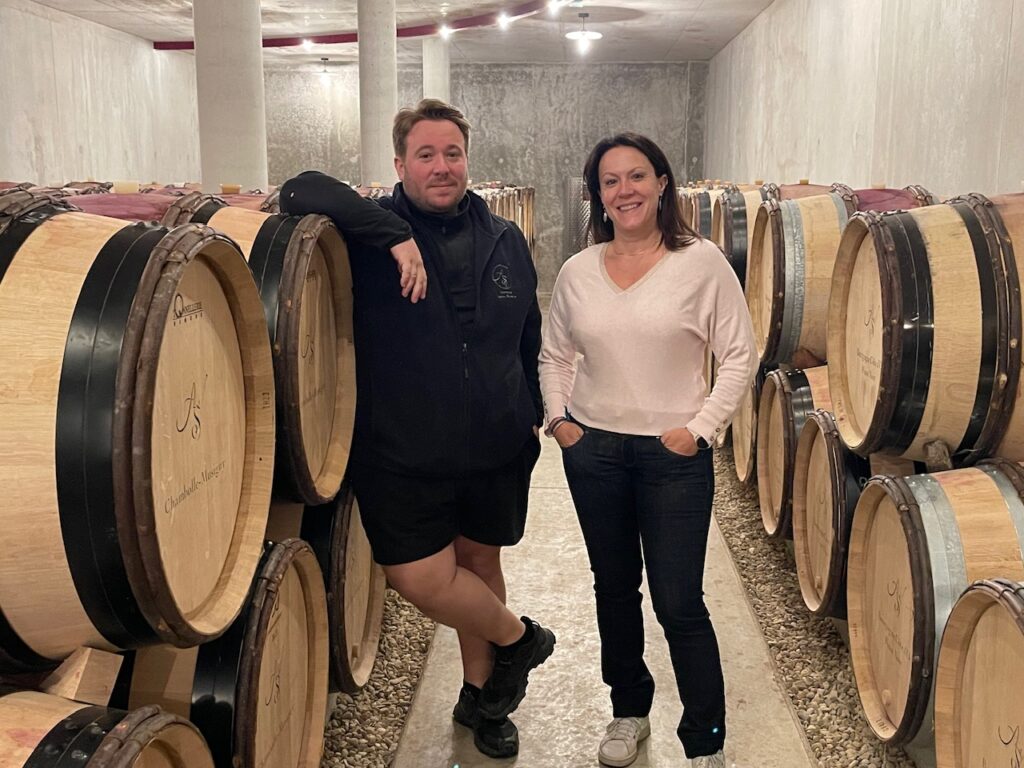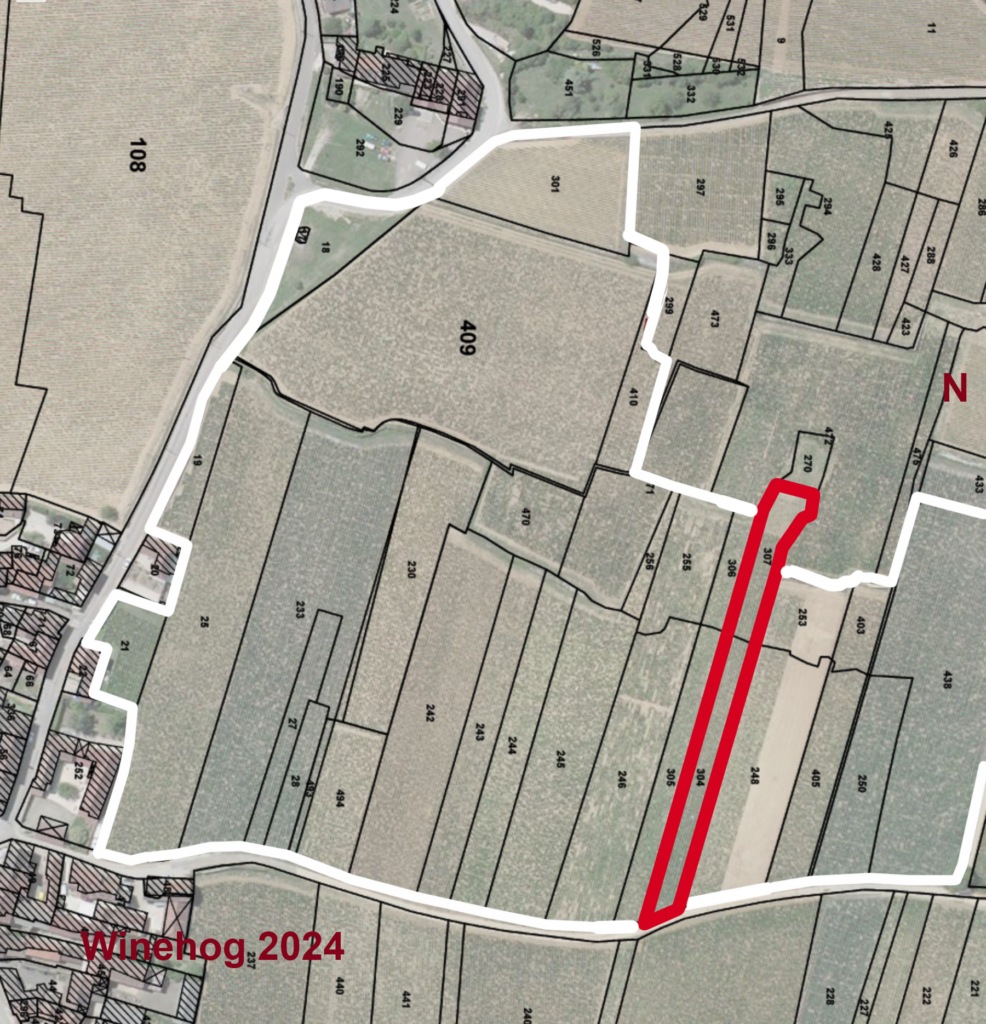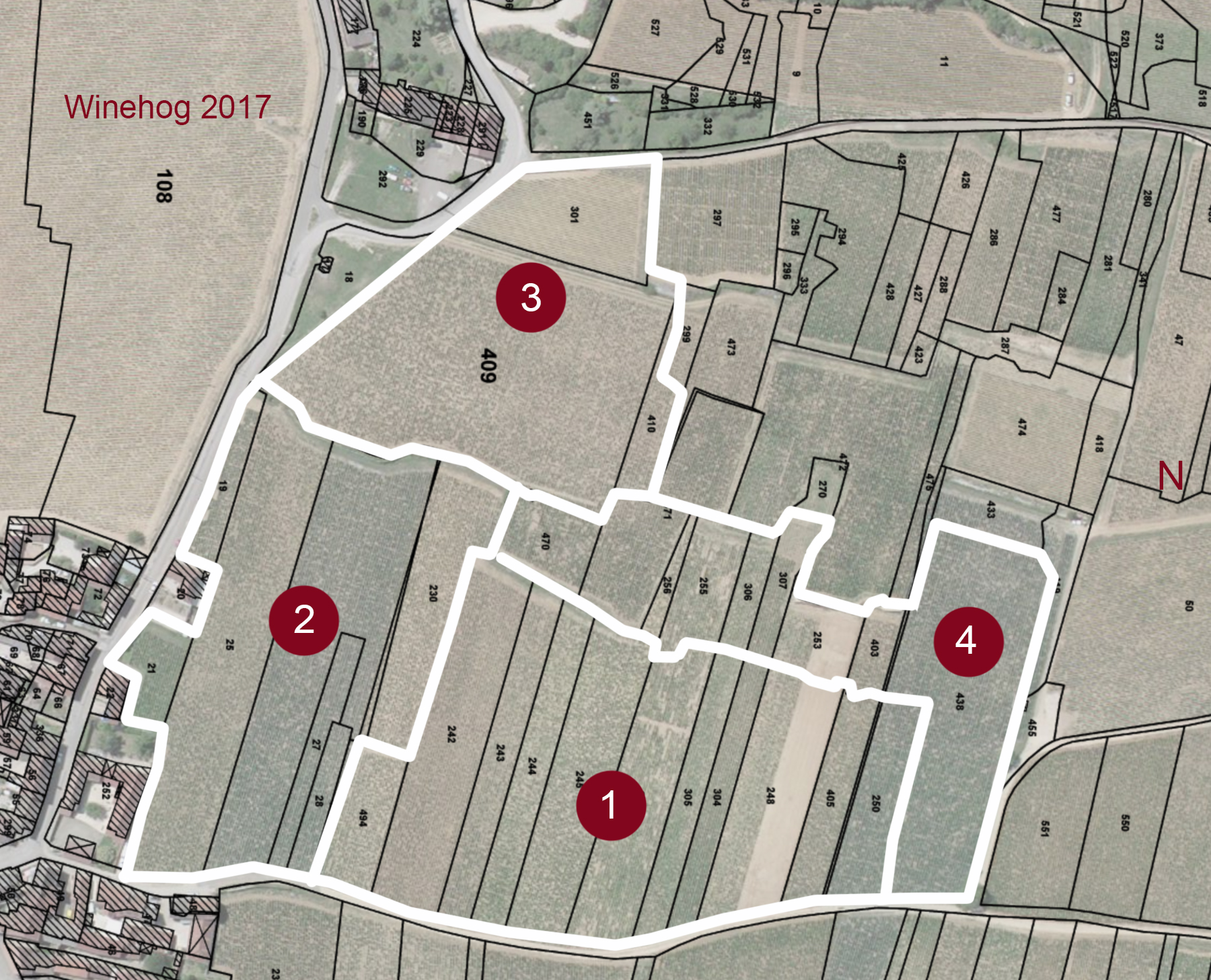Domaine Amiot-Servelle is showing very fine progress in these years and this does set focus on the fine terroirs they have. The Clos Saint-Denis is in my view a true treat located just next to the Arlaud plot in the very core of this fine vineyard.
It is a very refined Morey-Saint-Denis … hence fitting very well with the fine collection of Chambolle vineyards of Amiot-Servelle.

So let´s take a closer look at the Clos Saint-Denis of Antoine and Prune – let’s go to Chambolle!
The Amiot-Servelle estate in short
Clément Tachot began vinification in the 1920s at the estate in Chambolle Musigny.
Cécile (Clément’s daughter) and Jean Servelle (son-in-law) took over the estate in the 1950s and created Domaine Servelle-Tachot.
In 1980, Jean’s sister, Elizabeth Servelle, and her husband, Christian Amiot, entered the picture. Christian’s father had his own estate in Morey-Saint-Denis – and this where the Clos Saint-Denis comes from.
In 1989, Christian and Elizabeth took over the estate that continues today as Amiot-Servelle.
Christian and Elizabeth Amiot-Servelle have three children, two of whom are involved in the domaine: Prune and Antoine Amiot-Servelle. The brother and sister work together, and they will eventually take over from their parents.
To Clos Saint-Denis …
Clos Saint-Denis the current vineyard
The total area of the vineyard is according to my calculations – 6.62 ha. Clos Saint-Denis today consists of plots from 4 climates – Clos Saint-Denis, Calouére, Maison Brûlée, and Les Chaffots – all located on the upper northern side of Morey-Saint-Denis – see map below..

Please note that the border between Les Chaffots 1 er cru and Clos Saint-Denis is not 100% accurate – see the maps below for more details
In many cases, the borders between the vineyards are ancient and have remained unchanged for centuries. But in other cases .. especially when vineyards have been expanded, the borders between the vineyards become rather complex, leaving the vignerons with irregular plots, and a part of a plot in one vineyard and the rest of the plot in another.
This is also the case with the border between the expanded Clos Saint-Denis, and the remaining part of Morey-Saint-Denis Les Chaffots.
The very detailed map below shows the current Clos Saint-Denis with all plots shown on the map. There are as mentioned plots from four climats included in the current Clos Saint-Denis.
Plots from the following climats are today included in Clos Saint-Denis:
- Clos Saint-Denis – 2.1420 ha
- Maison Brûlée – 1.8425 ha
- Calouére – 1.3165 ha
- Les Chaffots – 1.3190 ha
As it can be seen Clos Saint-Denis has absorbed the climats Calouére and Maison Brûlée, while it has taken a considerable chunk of Morey Saint Denis Les Chaffots. The total area of Clos St. Denis today is 6.62 ha

The decree below from 1944 shows that in total 4.42 ha from the vineyards Calouére, Maison Brûlée, and Les Chaffots had been included in the Clos Saint-Denis thus expanding the total area to 6.5620 ha – almost equivalent to the current size. The expansion did however presumably happened already in 1936 – but the decree above is however the documentation I have been able to find.
The Domaine Amiot-Servelle plot on Clos Saint-Denis
Domaine Amiot-Servelle has two plots in Clos Saint-Denis – and these are in reality one area. The main plot is cadastre no 304 located in the core of the original Clos St. Denis, this plot is 0.1072 ha. The second plot is located just above in the Les Chaffots part of Clos St. Denis – as a continuation of the larger plot below. The plot in Les Chaffots (cadastre no 307) is 0.0686 ha.
In total Domaine Amiot-Servelle own 0.1758 ha in Clos St. Denis – hence the production is limited to say the least – approximately 900 bottles per year.

Domaine Amiot-Servelle, Clos Saint-Denis – the wine
Here is the 2023 tasting note on this lovely wine …
Domaine Amiot-Servelle Clos Saint- Denis 2023
The Clos St.-Denis is somehow closer to the Amiot-Servelle style, although the vineyard is in the core of Morey. This is a tremendous and delicate wine from the very core of the clos. It has a beautifully filigreed minerality and is light-footed and vivid. I love this vineyard!
(Drink from 2042) – Outstanding – (95p) – ![]()
References & Sources:
- Jules Lavalle, Histoire et Statistique de la Vignes et Des Grands Vins de la Côte d’Or (1855)
- Batault-Morot, E. Plan statistique des vignobles produisant les grands vins de Bourgogne. (1861)
- M.R. Danguy et M. Ch. Aubertin, Les Grands Vins de Bourgogne (1892)
- Camille Rodier, Le Vin de Bourgogne (1920)
- Clive Coates, Cote D’Or (1997)
- Jasper Morris, Inside Burgundy: Cote de Beaune
You need to login as a Premium subscriber to read the rest of this article. If you are not a Premium subscriber, use the subscribe function and sign-up.
Related articles
- Terroir Insight: Domaine Arlaud Clos Saint-DenisDomaine Arlaud is in my view one of the somewhat overlooked gems of Morey-Saint-Denis. But after tasting their rare yet truly delightful Clos Saint-Denis I decided to set focus on this estate. Domaine Arlaud offer a range of beautiful wines with a high drinkability and with quality increasing year by year. So let’s take a closer look ...
- Visit to Domaine Arlaud – Tasting the 2021s from CaskIn Burgundy and elsewhere, 2021 was a cool and frosty year. Despite using fire and circulating fans in the vineyards, the results of the April frost and summer rains were low yields and serious challenges with the health of the grapes. Domaine Arlaud, however, has done remarkably well, producing pure, vivid, and delightful wines. Lovely wines ...
- Visit to Domaine Arlaud – tasting the 2020s from caskI am back at Domaine Arlaud, tasting the 2020s just three months after enjoying the 2019s from bottle. There’s no reason to repeat Arlaud’s story here, as it is available and up to date in the article about the 2019s. Photo from March 2021 Just one reminder: Domaine Arlaud is certified both BioDyvin and Agriculture Biologique (AB). It ...
- Visit to Domaine Arlaud – tasting the bottled 2019sDomaine Arlaud is producing some magnificent wines, and year by year the connoisseur’s awareness of them increases. Arlaud is both organically and biodynamically certified, and despite the slowly but surely increasing renown of this estate, it is still somewhat under the radar. How long will that last? The low-key domaine is located in a relatively ...
- Brandis Tasting – the delightful 2017 vintageDomaine Brandis, with Tom Brandis at the wheel, is one of Denmark’s main Burgundy importers. In early November, Tom held his large Wine Festival with a very fine lineup of delightful producers – French, German, Italian; you name it, they were there. A very, very rare bird I had a short splash and dash at this tasting, as I ...


 - A true vin d’émotion – a Burgundy of passion
- A true vin d’émotion – a Burgundy of passion - A truly hedonistic wine – lively and enjoyable
- A truly hedonistic wine – lively and enjoyable - A vivacious wine for pure indulgance
- A vivacious wine for pure indulgance - A potential vin d´émotion - frais et léger
- A potential vin d´émotion - frais et léger